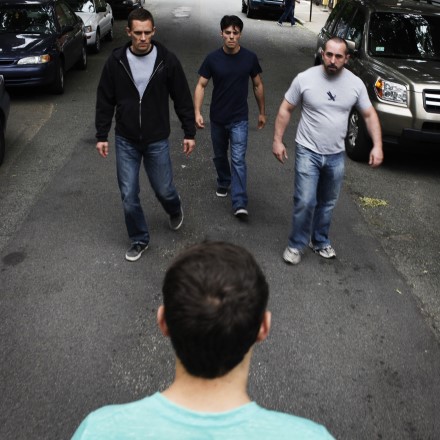Offender Processes & Decision Making

Articles On Criminal Processes
- Think Like The Predator
- The 5 Step Predator Process
- The Post Conflict Phase of Violence
- Real Life Predator Process
- Synchronization Of Movement
- Predicting Violence Through Movement
- Timeline of Violence
- Gaining Access
- Scripts
- The 5-Step Predator Process Explained
- The Art of Persuasion Recognizing When You Are Being Played
- Premeditated Violence The Fantasy, Planning & Preparation Phases
- Target Search
- Victim Selection
- Surveillance
- Synchronization
- Strike Phase
All Personal Safety Articles
What Are Criminal Processes & How Do Offenders Make Decisions?
Premeditated crime, including violent offending, follows some very standard processes, which if understood can be used to increase personal safety. If a process follows predictable steps and stages, and it is possible to identify these then predatory individuals can be recognized and identified when they are engaged in committing an offense. Having the ability to predict crimes and acts of violence before they occur, creates opportunities for avoiding being targeted and/or victimized, or when/where this isn’t the case, it is possible to better prepare ourselves for dealing with the incident. There are however situational factors that can prevent avoidance, such as if our aggressor is somebody we live with e.g., in the case of intimate partner violence (IPV), so one of the factors that affects our ability to avoid violence is our "relationship" with a potential offender etc.
Offenders search for suitable locations, and suitable victims, when looking to commit a crime. Sometimes their search may be active and other times passive i.e., an individual who has a history of committing street robberies, and who is in need of money, may go to a location where they have previously had success in search of somebody to victimize (such locations are referred to as "Crime Attractors"), or they might find themselves in a location, during their routine activities) where opportunities to offend present themselves, and they take advantage of them – these locations are referred to as "Crime Generators". When we are able to recognize the types of locations that lend themselves to certain types of offending, we can where possible avoid such sites, and/or increase our vigilance when in them etc. Research by Sherman in 1995, suggests that crime and offending are six times more predictable by location than by the identity, and characteristics, of offenders. Understanding the role that location plays in the criminal process is an extremely important part of offense prediction and personal safety. Equally important is the role that temporal factors (time of day), plays into location selection and choice e.g., certain locations, such as city centers and/or financial districts etc., are busier at certain times of day than others, and this can affect offending.
Another important aspect in the criminal process is target/victim selection i.e., why is one person, property and/or vehicle selected as a suitable target rather than another? This is not a question of looking to blame or make those who were targeted for victimization responsible for the crimes committed against them, but rather to better understand offender decision-making. By understanding the cost-benefit analysis that offenders undertake, and how they balance risk and reward etc., it is possible to start to understand what creates an offending opportunity. Which may give us the ability to deny an offender one or some of the factors that need to be present for them to commit their offenses.
Being able to understand the situational components that need to present in order for an offense to be committed, and the steps and stages i.e., the process, that offenders follow when committing crimes we give ourselves the ability, to predict, prevent and avoid an incident before it occurs. This is the ultimate goal of self-protection and personal safety.
References
Kinney, J. B., Brantingham, P. L., Wuschke, K., Kirk, M. G., and Brantingam, P. J. (2008). Crime Attractors, Generators and Detractors: Land Use and Urban Crime Opportunities. Built Environment 34(1): 62-74. DOI: 10.2148/benv.34.1.62
Sherman, L. W. (1995). ‘Hot Spots of Crime and Criminal Careers’ in: Eck, J., & Weisburd, D. (eds) Crime and Place. Crime Prevention Studies, Vol. 4. Monsey, NY: Willow Tree Press
Vandeviver, C., Neutens, T., Daele, S. V., Geurts, D., & Vander Beken (2015). A discrete spatial choice model of burglary target selection at the house-level. Applied Geography 64(1): 24-34. DOI: 10.1016/j.apgeog.2015.08.004
Vandeviver, C., Van Daele, S., & Vander Beken, T. (2015). What Makes Long Crime Trips Worth Undertaking? Balancing Costs and Benefits in Burglars’ Journey to Crime. The British Journal of Criminology 55(2): 399-420. DOI: 10.1093/bjc/azu078